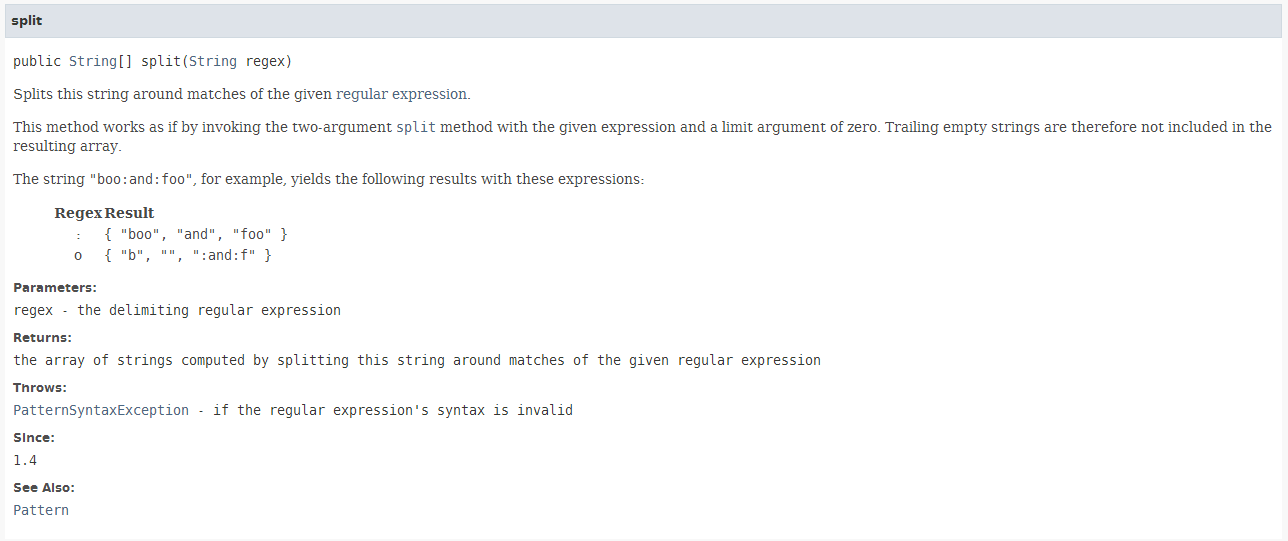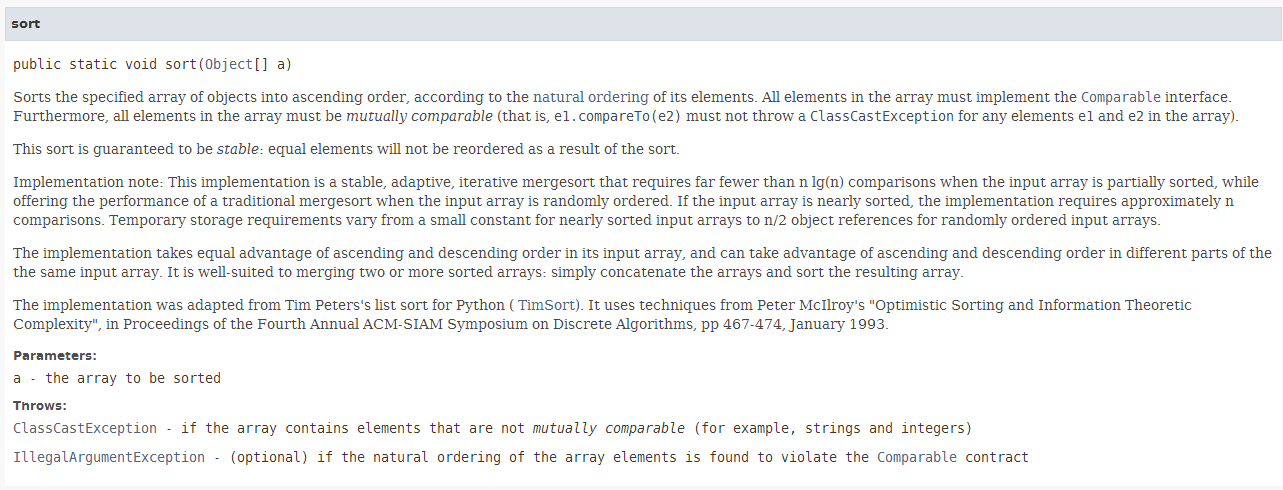String类的使用
String类
String类在java.lang包中,java使用String类创建一个字符串变量,字符串变量属于对象。java把String类声明的final类,不能有类。String类对象创建后不能修改,由0或多个字符组成,包含在一对双引号之间。
String类对象的创建
字符串声明:String stringName;
字符串创建:stringName = new String(字符串常量); 或 stringName = 字符串常量;
String类常用方法
1、求字符串长度 length()
1 String str = new String("asdfzxc");
2 int strlength = str.length();//strlength = 7
2、求字符串某一位置字符 charAt(int index),字符串下标从0开始。
1 String str = new String("asdfzxc");
2 char ch = str.charAt(4);//ch = z
3、提取子串 substring(参数)
参数有常用的两种类型:
1)public String substring(int beginIndex)//该方法从beginIndex位置起,从当前字符串中取出剩余的字符作为一个新的字符串返回。
2)public String substring(int beginIndex, int endIndex)//该方法从beginIndex位置起,从当前字符串中取出到endIndex-1位置的字符作为一个新的字符串返回。
1 String str1 = new String("asdfzxc");
2 String str2 = str1.substring(2);//str2 = "dfzxc"
3 String str3 = str1.substring(2,5);//str3 = "dfz"
4、字符串比较 compareTo(String anotherString):对字符串内容按字典顺序进行大小比较,返回整数,若当前对象比参数大则返回正整数,反之返回负整数,相等返回0;equals(Object anotherObject):比较当前字符串和参数字符串,在两个字符串相等的时候返回true,否则返回false。
String str1 = new String("abc");
String str2 = new String("ABC");
int a = str1.compareTo(str2);//a>0
int b = str1.compareTo(str2);//b=0
boolean c = str1.equals(str2);//c=false
boolean d = str1.equalsIgnoreCase(str2);//d=true,和equals方法类似,忽略大小写
5、字符串分割 split(String regex)
String str1 = new String("a,b,c");
String[] str2 = str1.split(","); //{"a","b","c"}
具体解释:

课程实践
实践内容:模拟实现Linux下Sort -t : -k 2的功能。参考 Sort的实现。提交码云链接和代码运行截图。
Linux的Sort命令是将文件的每一行进行排序,从首字符开始比较ASCII码值,默认按升序输出。
sort(选项)(参数)
选项: -k:排序时,指定本域的开头和结尾;
-n:依照数值的大小排序;
-r:以相反的顺序来排序;
t<分隔字符>:指定排序时所用的栏位分隔字符。
参数: 指定待排序的文件列表。
所以Sort -t : -k 2 指定分隔符为":",以第2列大小为准排列。
import java.util.*;
public class MySort1 {
public static void main(String [] args) {
String [] toSort = {"aaa:10:1:1",
"ccc:30:3:4",
"bbb:50:4:5",
"ddd:20:5:3",
"eee:40:2:20"};
System.out.println("Before sort:");
for (String str: toSort)
System.out.println(str);
Arrays.sort(toSort);
System.out.println("After sort:");
for( String str : toSort)
System.out.println(str);
}
}
从上述代码可知,调用了Arrays的sort(array)方法,具体如下:

运行结果如下:

这段代码实现了将文档按照默认的排序方法,即从头到尾进行比较,然后升序排列。
为了实现Sort -t : -k 2 ,还需要将字符串分割和输出整合这两个部分补充上去,根据上述对split方法的学习,可使用split方法完成-t :这个部分的功能,具体如下:
Integer [] tmp = new Integer [toSort.length];
for(int i=0; i<tmp.length; i++)
tmp[i] = Integer.parseInt(toSort[i].split(":")[1]);
一个循环将文档中每一行的第2列数字保存到Integer数组中,这其中使用到了split分割方法,也使用了字符串转为整型的方法,这样就得到了每行的第2列数字。需要注意的是数组的下标从0开始,所以取第2列是数组的下标为1。
下一步就是整合输出,输出时从头至尾进行判定,若该行的第2个数的值和保存第2列数组i中的相同,则将这行输出,循环直至输出完成为止,具体代码为:
for(int i=0; i<tmp.length; i++)
for(int j=0; j<toSort.length; j++)
if(Integer.parseInt(toSort[j].split("